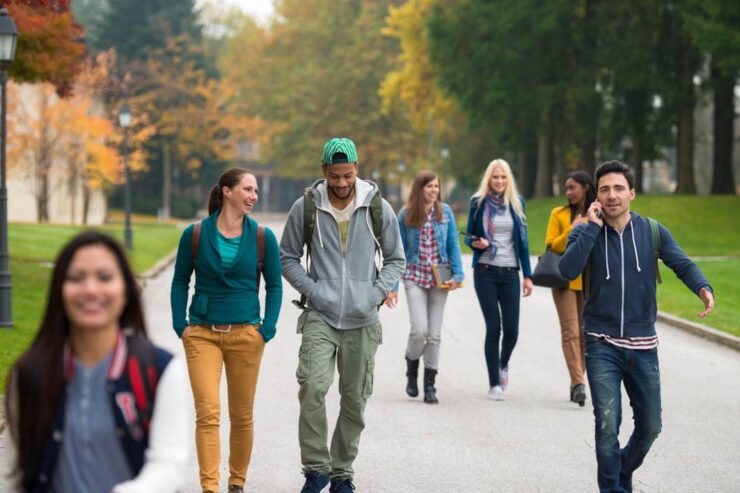Three innovations to help college students build community, resilience, and belonging
November 30, 2021, By Alexa Silverman, Senior Director, Student Experience and Well-Being Research
Students who feel a sense of belonging on campus are more likely to persist and graduate, making fostering belonging an important part of many universities’ student success strategy. From COVID-19 lockdowns that isolated many students at home to a societal conversation about race that highlighted additional barriers to belonging for BIPOC students and other historically underrepresented populations, the past two years have led many institutions to innovate to overcome these new and emerging belonging challenges.
In EAB’s conversations with campus leaders about students’ sense of belonging and connectedness, three innovative strategies emerged:
1. Apply a DEIJ lens to helping students find community and social networks
When we talked to campus leaders, many told us that COVID-19 lockdowns made it hard for students to make friends and build community. As on-campus instruction resumes, universities are creating additional, structured opportunities to do just that. One university has “Campus Conversations,” which are a virtual and in-person peer discussion series focused on meeting friends and discussing topics of identity and inclusion. A similar program at another university offers a first-year experience featuring facilitated, small-group dialogue and activity sessions.
2. Make campus processes and transactions feel more welcoming
Student-facing processes and services can help students feel welcome on campus if they are simple, straightforward, and designed with student usability in mind. But all too often, these transactions are confusing and feel impersonal.
To address this challenge, many institutions have created one-stop shop resources so that students don’t need to get caught up in the “campus shuffle” between different offices and services. EAB’s insight paper shows how institutions like the University of Minnesota, Clark University and others created both online and in-person one-stop shops.
3. Normalize mental health challenges and building resilience
Students often struggle with questions of belonging as they transition to college, in ways that can impact their deeper mental health and wellbeing. To help students understand they are not alone and help build cognitive behavior skills that students can use to manage their emotions and cope with challenging situations, the University of Washington launched its six-week Be REAL program.
Be REAL includes small-group discussion, partner activities, and self-reflection. UW’s evaluation found that students who participated in the program showed significant increases in multiple measures of wellbeing. The program is run through UW’s Resilience Lab, which works to scale mental health support to the whole student community.
-
98%
of the University of Washington Be REAL Students said the program was helpful to their wellbeing
At many institutions, male students are particularly vulnerable to the stigma around talking about mental health. Leaders at Saint Leo University found that male students participating in esports were sometimes more comfortable sharing these challenges in text on the team Discord server. Saint Leo worked with student leaders already serving as Resident Assistants to also serve as embedded peer advisors in Discord to share resources and support.
Learn more best practices to advance student belonging
Through over a decade of research on student success and wellbeing, EAB has identified best practices for helping students engage in active learning inside and outside the classroom, navigate campus resources, establish mental wellbeing, and develop closer relationships with faculty.
Visit our Student Belonging Resource Center to bring the practices to your campus.


Student Belonging Resource Center
More Blogs

3 ways to combat the student loneliness epidemic on your community college campus

How to navigate policy challenges and show support for your trans students

How colleges can combat student disengagement and increase socioemotional readiness
Great to see you today! What can I do for you?